If you want another bushcraft outfit in your survival bag, then you must look for a shemagh.
Shemagh is a functional piece of cloth and yes – the bandana’s big brother.
They have almost unlimited uses which is why you need one in your preparedness gear.
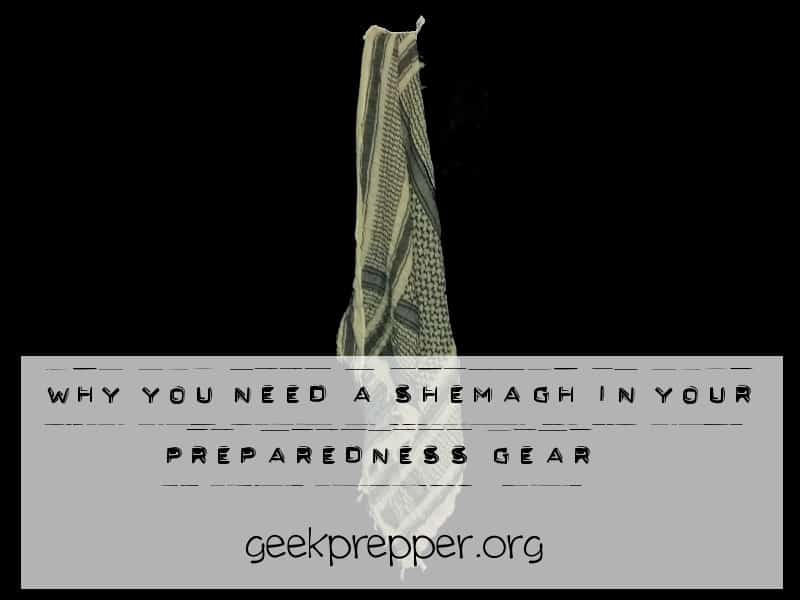
| Quick Navigation Why You Need a Shemagh in your Preparedness Gear How to Make A DIY Shemagh How to Tie A Shemagh Shemagh VS Bandana: Which Is Better? |
Why You Need a Shemagh in your Preparedness Gear
What is a “Shemagh”? Wikipedia basically states that it’s a traditional Middle Eastern headdress or scarf, made of cotton, and is worn by Arab men, Jews, and Kurds.
Despite British soldiers being issued keffiya for decades, they commonly call them shemaghs.
In fact, the British Empire has used them since before WWII by certain military units and police, and are commonly worn by special forces around the world. They must be pretty useful!

The Shemagh is essentially a big bandana, usually a square measuring 42 or 44 inches on each side.
They come in many colors. I personally have them in green, khaki and white, which should cover all seasons (for some quick head camouflage).
What can you use a Shemagh, or a regular bandana for? Almost anything.
I keep one in each of my family vehicles, camping kits and even carry one daily in my backpack for work.
I’m bald, so this comes in very handy. I can’t tell you the number of times I’ve been caught, unexpectedly, outside in the sun, for long periods of time. This can be a lifesaver, even more so, for us fair-skinned folk.
Some Shemagh uses:
- Sun Protection for bald heads… or necks, for those of you with hair!
- Cooling (soak with water and drape or tie it to yourself)
- Sweat Band
- Dust Mask
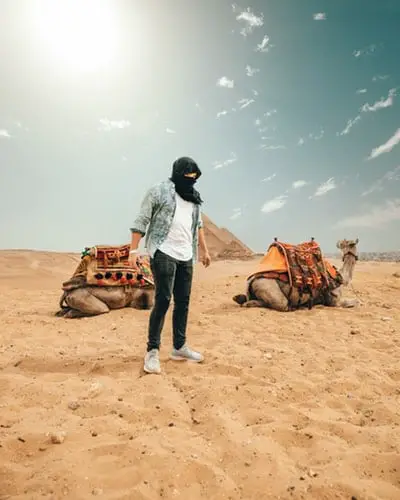
- Face covering (conceal your identity, like a ninja)
- Diffuse Light (put over flashlight or battery lantern)
- Water pre-filter (remove sediment that could clog your water filter)
- Water acquisition – Tie around ankles and walk through plants covered with dew. Wring into water container (or mouth)
- Signaling flag
- Trail marker
- Tie to luggage or bag to make it identifiable
- Hot pad or potholder (metal or other cookware gets hot when you use it with fire)
- Food cover (keep bugs off your food)
- Tourniquet
- Arm Sling
- Use to secure a splint in place
- Eye covering or eye patch
- Scarf or Neck Warmer
- Napkin
- Washcloth
- Towel
- Dishtowel
- Handkerchief (you may have a runny nose or sneezing)
- bag for food collection or to help carry items
- Tie around sticks or branches to make a bundle (easier to carry)
- Knife Wipe Cloth
- Gun Wipe cloth or tear it up to make gun cleaning patches
- windsock (check wind direction)
- Tie-down loose gear (on vehicles, belt or backpack)
- use it to replace a busted backpack shoulder strap
- belt
- Hobo pack (pouch on end of a stick)
- improvised diaper
- improvised toilet paper (yuck)
- Blindfold (I’m not even going to ask….)
- Bullfighting cape (joking…or am I?) “Olé!”
How to Make A DIY Shemagh
Making your own shemagh isn’t as hard as you think. The materials you’ll need to make one are pretty basic, too. You probably already have them at home.
For one, you’ll need a tape measure and a pair of scissors. You’ll also need fabric. In the summer, cotton is the most ideal type of fabric to go. If you’ll be using your shemagh in the winter, it’s probably a good idea to pick something synthetic.
Here are the steps:
- Unfold your cloth on a solid surface. You can use a table, a countertop, or the ground to really get the fabric to lay flat.
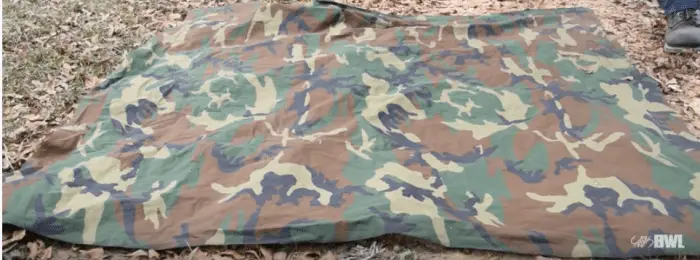
- Take your measuring tool and a marker. Measure about 48 1/2 inch square onto the cloth and make the right marks. Cut the fabric along the lines you made using your scissors.

- Next, fold about a 1/4 of an inch along all the edges of the fabric. You can use a few straight pins to secure them in place. After you are done with all the sides, you can go back around and tuck the edges under. This step helps make sure that your shemagh won’t easily unravel.
- Get your sewing machine and sew the hem. As you go through the fabric, remove the straight pins.
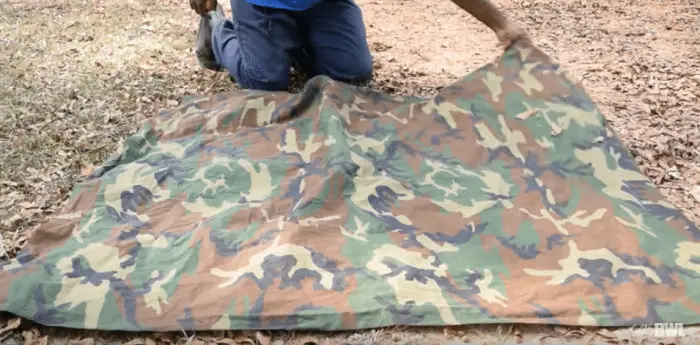
Now, if you feel that the size is too big for you, make a smaller shemagh. For that, you’ll need to cut your fabric into 2 feet 1.5 inch by 2 feet 1.5 inch. Do the same steps in making a big shemagh.
Take note that you can have fringe on your shemagh. If this is how you want it, then add an inch or two to the edges.
How to Tie A Shemagh
A shemagh is a tool that can be used in tons of ways. The most common, however, is to use it as a head wrap or face mask when you want an effective camo or you just simply want to protect yourself from dusty environments.
To learn how to tie a shemagh for that purpose, here are the steps.
- First, fully open your shemagh. You should have it open in a full square.
- Next, form a triangle by folding it in half.
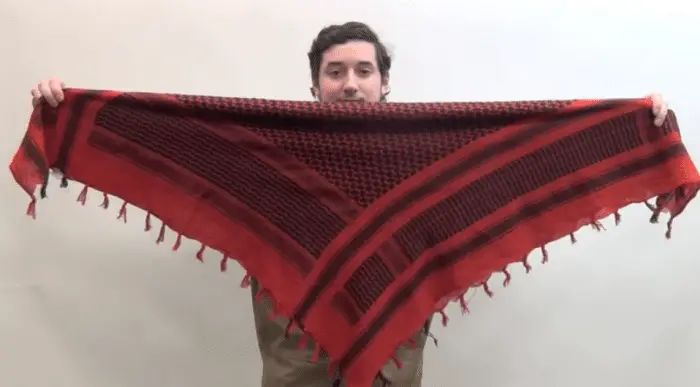
- Take about 3/4 of the folded edge and place it over your forehead. At this point, you should think of tying a bandana over your head.

- Hold the shorter end and pull it under your chin. Pull it toward your head’s back.
- Get the longer side and place it across your face. Wrap it over your head until its end is on the opposite side.
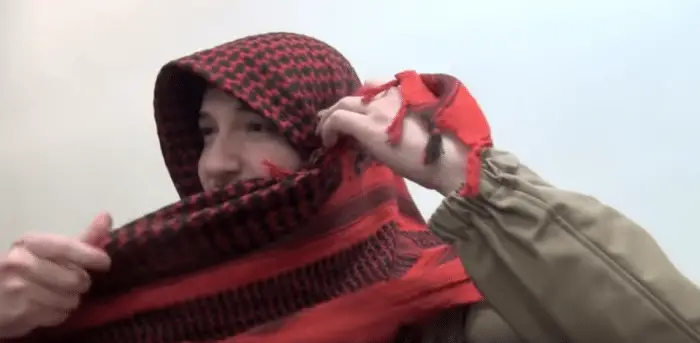
- With two overhand knots, tie both ends together.
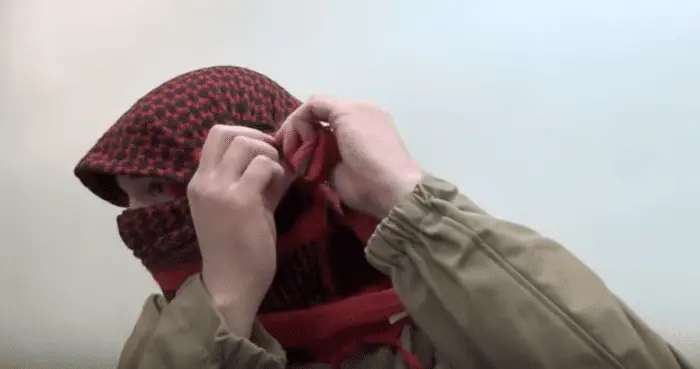
Another way to use your shemagh is as a loose neck scarf.
- For this, you need to fold it into a triangle.
- Place it over your face’s lower half. Take note that the folded edge needs to be the part that covers your mouth and nose.
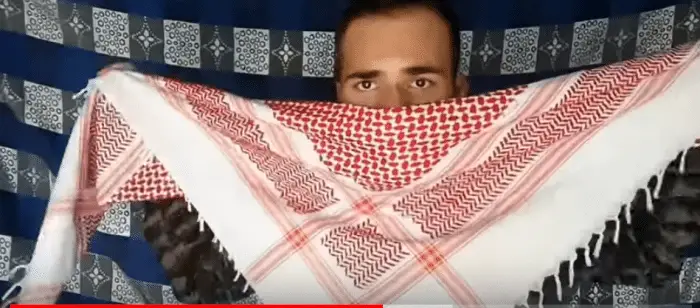
- Take the ends and bring them around your neck. Make sure that it’s held tautly against your face.
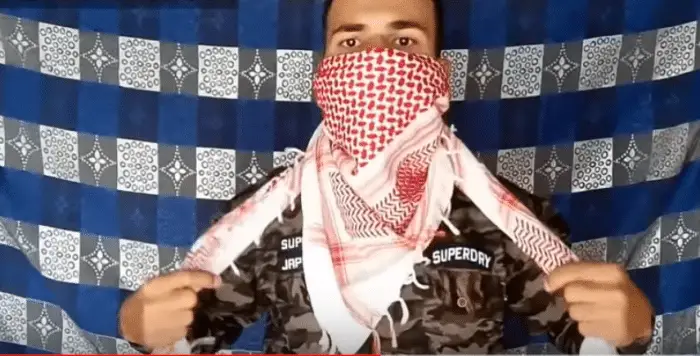
- Using a single knot, secure the shemagh in place. Remember, don’t tie it too tightly. Allow the ends to hang down your chest and tug the top part so that the shemagh now rests around your neck and below your chin.

Shemagh VS Bandana: Which Is Better?
Now, the main difference between a shemagh and bandana is the size.
A bandana is typically 22 inches on the side. There are, however, larger versions which can go up to about 27 inches.
In most cases, bandanas are made with a cotton-synthetic blend or 100% cotton, making them ideal to use during really hot weather conditions. They are also available in a wide range of colors.
A shemagh, as you probably already know by now, is quite versatile. Most of them measure 42 inches square but some can go as big as 47 to 48 inches on a side.
Both of them can be used as impact weapons or to carry gear in a bindle. You can even use them as a tourniquet when you have no other options in the field.
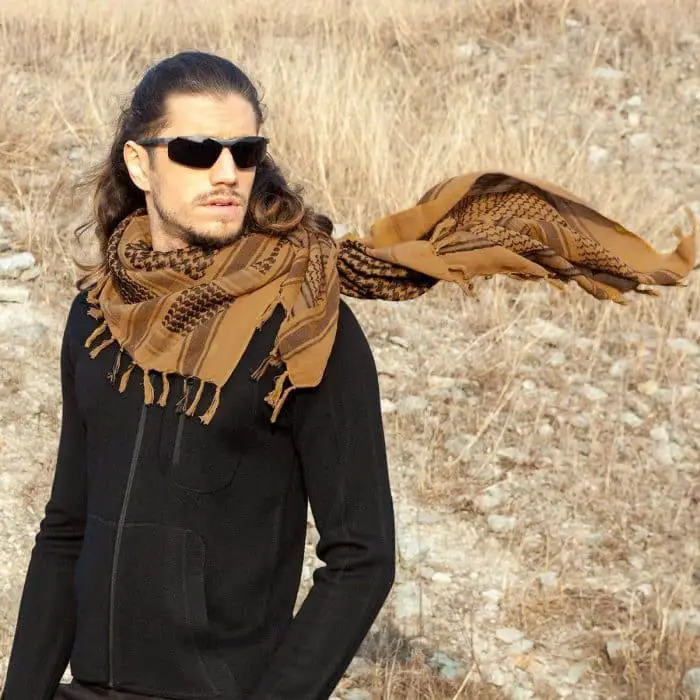
Now, if you really need to pick just one, here are some factors to consider:
If you will be hiking or simply out on a sunny day, a shemagh will offer better protection for your skin. It also works better in protecting your eyes and mouth on a windy day.
If you will be going to a place with a nicer weather, a bandana would be better. It allows the skin to breathe better while still giving you protection.
A bandana is also a better pick if you are hunting because it’s lighter and less likely to compromise your view.
The list of uses for a bandana or a good bandana could go on and on and would only be limited by your imagination. This list is just a sampling of why you need a shemagh in your preparedness gear!

If you get one, make sure it’s made of a synthetic material. Cotton sucks.
Do a search, there are several available. Check eBay as well.
correction, you only want cotton because it will breath better and be more water absorbing. also you can easily turn it into charcloth.
“Cotton sucks”, huh? OK there. You been taking Stupid Pills?
It sounds like a handy item to have with you, But be careful where you wear it if and when a war between the muslums and American citizens breaks out. (If God forbid there is another major terror attack on U.S. soil.) You don’t want to be mistaken for the enemy.
The Kufiya is worn by SAS, Special forces etc. No one will think you are a enemy just because you wear one. Besides, you can buy a solid color if you are really concerned.
I agree with you Sam. That gear here would mark you as muslum or arab. The majority of citizens here would not know they are worn by British special forces.
If I had done my research, I would have bought Shemaghs instead of pricey swaddling blankets for my babies.
Almost useless information of the day: that bag on a stick stereotypically carried by hobos is called a bindle. I have nothing to contribute.
Disguise,pretend to be a Muslim/Arab if the situation calls for it.
Why is this considered better than the traditional American bandana?
There are many ways to wear a shemagh around your neck. Below, I show to you a one of the most common methods that is the classic approach.
Hold your shemagh and make a triangle out of it.
Position the folded edge over your forehead, covering it.
Then, shift it left or rightwards to the center of your forehead and check that both ends are equal.
Take the end of the right side of your shemagh towards the left and pull it over the left shoulder, placing it under the chin.
Similarly, take the left side of your shemagh and pull it over your face to the right. Check that your nose and mouth are concealed.
Know the two ends of the shemagh behind your head. Do this carefully and tightly so that when you move, it does not slip off. However, it should not be too tight that breathing is restricted.
Make any final adjustments to ensure that it is comfortable.
Thanks so much for sharing, I love your article!